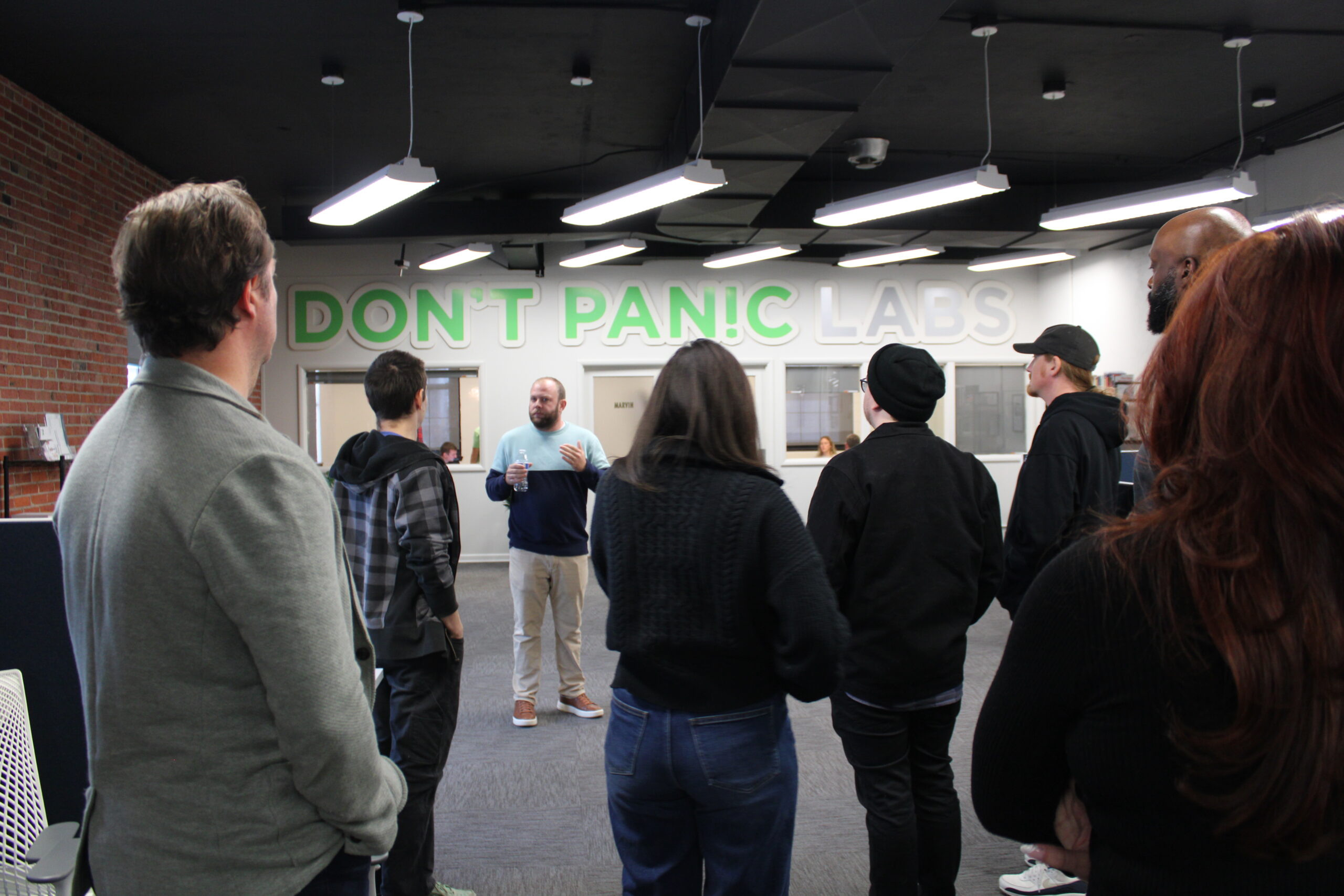 For a man who doesn’t watch television or have an extensive background in technology, Bruce Ballai currently finds himself in an interesting spot: he’s the co-founder of technology startup aiming to alter the landscape of television advertising.
For a man who doesn’t watch television or have an extensive background in technology, Bruce Ballai currently finds himself in an interesting spot: he’s the co-founder of technology startup aiming to alter the landscape of television advertising.
Ballai (far left) and Jason Bogner (near left) started Oohly, a Leawood, Kan. company building a platform designed to let viewers identify and instantly connect with the products they see while watching TV or movies.
“We’re trying to make it so that you see the stuff you want to see, you get the stuff you want to get and you get that with minimum interference in watching the program,” Ballai said in a phone interview.
Bogner, the company’s technical co-founder, initially conceived of the idea for Oohly in late 2009. “I was driving from Kansas City to Omaha and was struck with a vision of a seamless integration between what you’re watching on TV and the ability to instantly find out what it is and where to buy it,” Bogner said in an email interview.
Looking for expertise to complement his technical know-how, Bogner sought out Ballai, an attorney by trade. Oohly secured its first private funding in late 2010 and has hit various milestones along the way since. But things really began to pick up pace earlier this year, as Oohly applied for a patent for its platform in February — Ballai said the patent is currently pending — and celebrated its official launch in March.
Now, for Oohly to put its technology to work, the startup needs to broker an agreement with a creator of video content.

Under such an agreement, Oohly would provide content creators with an interface that enables them to load information about products that appear in a video into that video’s metadata. Then, when a viewer watches that video, Oohly’s consumer-facing application would detect that metadata, enabling the viewer to get details about items in the video and to find vendors who sell those items (pictured left).
So, for instance, if the lead man in the summer blockbuster you’re watching wears a leather jacket you like and the wardrobe department for that movie loaded product information about the jacket into the film’s metadata, you could use Oohly to figure out just what jacket it is and locate online retailers selling that jacket.
For viewers, Oohly seeks to provide product information on demand.
“Our idea is taking the relevance concept and saying, ‘Let the consumer decide what’s relevant,’ ” Ballai said. “They’re the ones who pick the show. They’re the ones who pick the actor they admire. They’re the ones who pick the jacket they like. And if we can get them connected, everyone’s a winner.”
For advertisers, with whom Oohly would work on a pay-per-click basis, the platform aims to reach desired demographics better than traditional television advertising and to eliminate the problem — for advertisers, anyway – of people using DVR technology to completely skip advertisements.
For content creators, that pay-per-click arrangement provides a new revenue stream, which Ballai said Oohly would split 50-50 with those content producers. Plus, he said, the new revenue stream helps alleviate the burden on content creators to force product placement into their plot.
“Nobody’s gotta write a script around the jacket or change the camera angles for the jacket and offend your sensibilities and ruin the show,” Ballai said.
Of course, it’s all contingent on Oohly getting content providers to input product information and make it readable by the Oohly app. That’s why the startup, which has eight part-time employees plus Ballai, isn’t interested in more funding but is chomping at the bit for partners.
“It’s very easy to sit in my house and talk to you on the cell phone from Leawood, Kan. and say, ‘This is how it’s all going to work,’ ” Ballai said. “But, you know, I understand that I’m kind of mapping out the future of an industry that I don’t even participate in.”
Ballai said Oohly has generally been greeted by positive reviews in meetings with potential partners, but the company’s still seeking its first formal agreement.
“We’ve had some conversations, and their universal response is ‘That’s kind of neat, we’re not sure we’re ready for anything like that just now. We’ve gotta think,’ ” Ballai said. “Nobody’s really saying no, but nobody’s saying yes.”
For a brief look at how Oohly works, see the video below.
Credits: Photos of Ballai and Bogner courtesy of Oohly. Screenshot from oohly.com. Video from Oohly on Vimeo.


